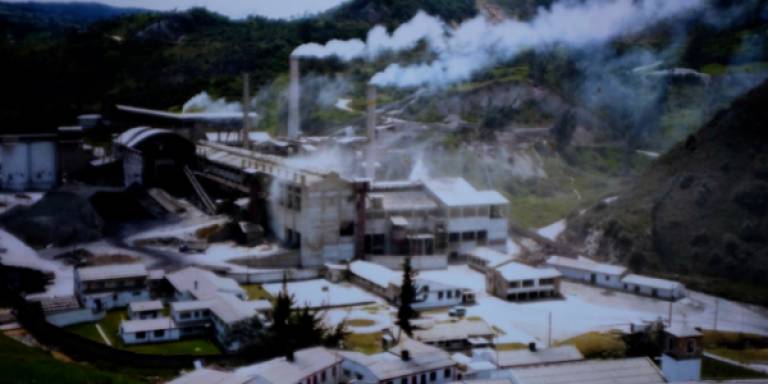Samper, La Siberia: Colombia’s “ghost factory”
6 February 2019
In his latest blog, Danny visits the ghost factory of Samper. For further interviews and insights into Colombian life please subscribe to his YouTube channel.

It’s been almost two decades since the cement mixers stopped churning in Samper. Once the pride of La Siberia – an unforgiving wasteland outside Bogotá, in the harsh altitudes of Chingaza – the factory now stands derelict. Abandoned. The “Chernobyl of Chingaza”. A ghost town that casts a shadow coloured with paradox; tales of revolution and change, hope and optimism for the people of the region… ultimately poisoned by greed. To this day, Samper remains a powerful symbol of progress and failure in Colombia’s misty moorlands…
It’s hard to conceive that this so-called “ghost factory” was once the beating heart of the region. The first cement factory in Colombia, which operated for over a century, pumping out 200 tonnes of cement each day… the main artery during the country’s “concrete boom” in the 1960s. Samper Cement Factory; a site-turned-settlement which transformed wastelands into production lines… smoke billowing, picks clinking against the hard limestone…extraction, machinery, cable carts shipping immense quantities of raw material to the mixers.
Whilst the United States was embroiled in the Great Depression, this injection of industry brought about nothing short of economic and social revolution. For the region, it spelt the end of semi-feudalism and broke the shackles which had enslaved the people of Chingaza since colonial rule. For the first time, the rural campesino received actual pesos in their pockets. Actual money. Cement money.
No more could the land-owning elite appropriate the land and force its inhabitants to work day-in, day-out for little more than a meal and a roof over their heads. The introduction of monetary payment changed everything, and for this reason the people of Chingaza look back at the heyday of Samper with nostalgia in their eyes.
However, sweeping change and rapid progress always has a price… and as is so often the case, it was the land that suffered. With the concrete boom came greed. Demand was increasing, and supply had to match. “Smith” churners were brought in from Germany. Production was stretched up to 1,000 tonnes a day. Extracting. Extracting. Pumping. Pumping. Pumping. Samper never sleeps.
The people of Chingaza still remember the silt. The grey powder falling from the sky like snowflakes and settling on the surrounding landscape. Crops, vegetation and streams turned a deathly grey. La Siberia became the concrete wasteland… a Valley of Ashes, without the watchful eyes of Doctor T.J. Eckleburg. Cattle started dying. People became sick. Workers started striking, and just like that the soon-to-be ghost town wrote its own obituary.
The introduction of environmental bodies into Colombian policy-making spelt the end for Samper. Sanctions followed and soon the money ran out. In 1998, the factory closed its doors and with it, the community of La Siberia vanished forever. What remains is a concrete example of how not to bring about change. An unsustainable model, maintained by hope but guided by greed until the model collapsed.
To this day, defenders of Samper claimed that the factory helped put an end to systemic exploitation in La Siberia. This is only a half-truth. Whilst helping to guide its people out of semi-feudal rule, Samper relentlessly exploited the very land that sustained it, and ultimately paid the price.
In this sense, the story of Samper is a lesson for the whole of Colombia – the most biodiverse country per square meter in the world, with the second highest proportion of environmental conflicts – that progress at the cost of land exploitation is a doomed enterprise.
Some might call it a fitting end as they look back on the ruin of Samper… a factory which is gradually being reclaimed by the very land it once exploited.
By Danny Concha
Danny recently contributed to the Colombia Calling podcast and discussed his YouTube project. You can listen back to the podcaset via iTunes or Soundcloud.
 Close
Close

